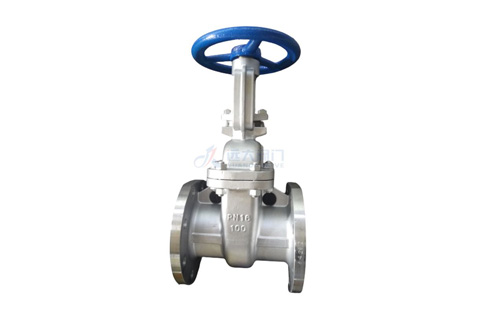Gate valves are essential components in various industries and applications, playing a crucial role in controlling the flow of fluids. Selecting the right gate valve for a specific application is vital to ensure efficiency and safety. This article will guide you through the selection, application, and design considerations for gate valves, addressing common questions along the way.
Understanding Gate Valves
Gate valves are linear motion valves that regulate fluid flow by raising or lowering a gate (a flat or wedge-shaped disc) inside the valve body. When the gate is fully lifted, it allows unobstructed flow, while lowering the gate restricts or completely stops the flow. These valves are widely used in pipelines to control the flow of liquids, gases, and even certain solids.
Stainless Steel Gost Standard Gate Valve
Selection Criteria for Gate Valves
Choosing the right gate valve involves considering various factors to ensure it meets the specific requirements of your application. Here are some key criteria to keep in mind:
Fluid Type: Consider the nature of the fluid (liquid or gas), its temperature, and whether it contains corrosive or abrasive components. Different materials are suitable for different fluids.
Pressure Rating: Gate valves come with different pressure ratings. Ensure that the selected valve can handle the maximum pressure in your system.
Size: Gate valves are available in various sizes. Select a size that matches your pipeline's diameter.
Material: Gate valves are made from a range of materials, including stainless steel, brass, cast iron, and more. The material choice should align with the fluid's properties and the environmental conditions.
End Connection Type: Gate valves can have different end connections, such as flanged, threaded, or welded. Ensure compatibility with your pipeline system.
Operation Type: Gate valves can be operated manually (handwheel) or automatically (actuated). Choose the appropriate operation type based on your system's needs.
Flow Rate and Regulation: Determine if your application requires precise flow control or simply on/off functionality.
Gate Valve Applications
Gate valves find applications in various industries, including:
Water and Wastewater Management: Gate valves are used to control the flow of water in treatment plants and distribution systems.
Oil and Gas Industry: Gate valves play a critical role in upstream and downstream processes, such as drilling, refining, and distribution.
Chemical Processing: They are used to manage the flow of chemicals in manufacturing and industrial processes.
Power Generation: Gate valves are essential in power plants to regulate the flow of steam and cooling water. Marine and Shipbuilding: These valves are employed in ship systems to manage seawater flow.
Gate Valve Design Features
Gate valve designs can vary, with different features to cater to specific requirements. Some common design features include:
Rising vs. Non-Rising Stem: The stem of a gate valve can be either rising (moves in and out of the valve) or non-rising (remains in a fixed position).
Solid vs. Flexible Wedge: The gate can be solid or flexible, allowing for better sealing in certain applications.
Bolted Bonnet vs. Pressure Seal Bonnet: Gate valves can have either a bolted bonnet (screwed or bolted) or a pressure seal bonnet for high-pressure applications.
Backseat Design: Some gate valves have a backseat design that allows for stem packing adjustments while the valve is in service.
Common Questions About Gate Valves
Q1: What is the difference between a gate valve and a globe valve?
A gate valve uses a gate to control flow with an on/off function, while a globe valve regulates flow more precisely with a plug and seat mechanism.
Q2: Can gate valves be used for throttling applications?
Gate valves are not ideal for throttling as they are designed for on/off control. Globe valves are better suited for fine flow regulation.
Q3: How do I maintain a gate valve?
Regular maintenance includes lubricating the stem, inspecting for leaks, and replacing damaged components.
Q4: What materials are commonly used for gate valves in corrosive environments?
Stainless steel, alloy materials, and corrosion-resistant coatings are often used for gate valves in corrosive environments. In conclusion, selecting the right gate valve is crucial for the efficiency and safety of your system. Consider factors such as fluid type, pressure rating, size, material, end connection type, operation type, and the specific requirements of your application. Gate valves play a vital role in various industries, and understanding their design features is essential for making informed decisions.
If you have any more questions or need further guidance on gate valves, please feel free to contact us.


没有评论:
发表评论